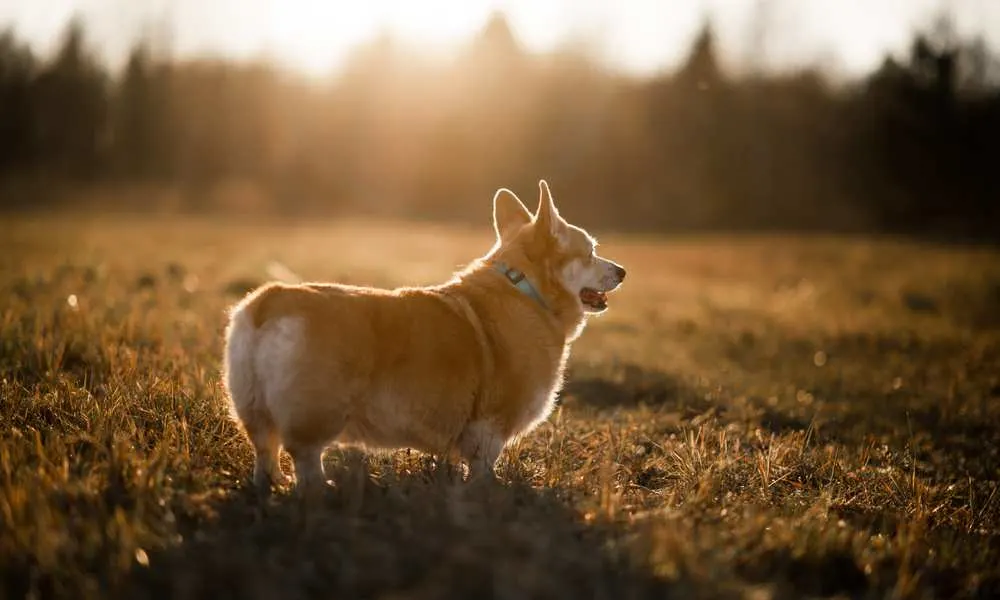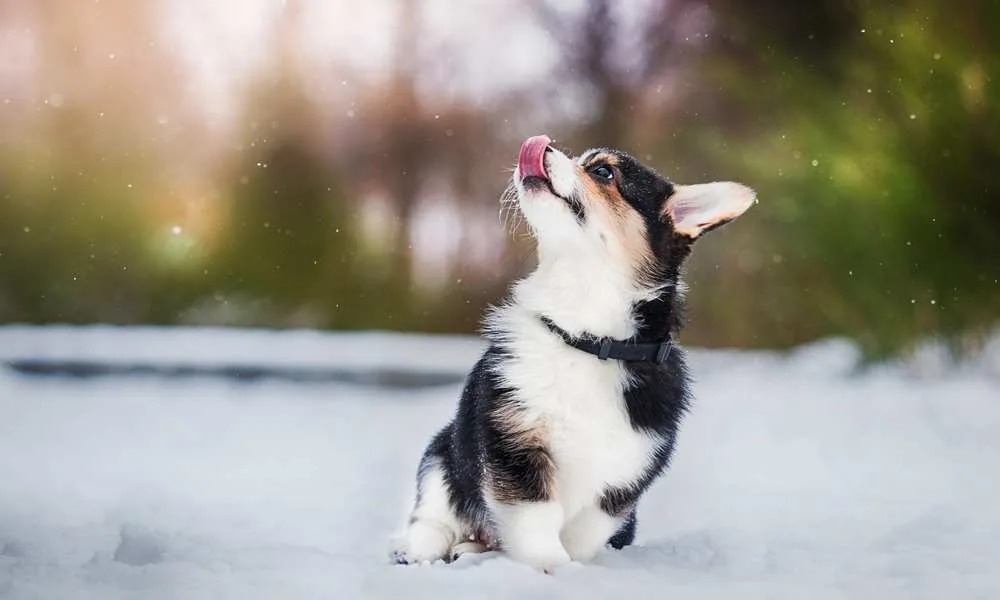There are many questions that Corgi owners have when it comes to living with one of these adorable dogs. How much should they eat? What kind of exercise is best for their little bodies? The list goes on.
But there is one crucial question that should get asked by potential owners.
What’s the best climate for Corgis? We say potential owners because there’s a slight chance that you can’t just move to a whole new region or country just because your Corgi can’t handle the weather.
But that’s a problem because it’s better to avoid such a situation altogether. If you grew up on a warm tropical beach, you would find a chilly Scandinavian climate impossible to live in. Well, imagine then how tough that tropical beach must be for, say, a Siberian husky? So what climate is the Corgi used to?
To find that out, we have to learn a thing or two about where the Corgi comes from. We won’t get into an in-depth history lesson. But we feel that it’s very important to know your puppy’s origin; that way, you can make its life just a tad more comfortable if the climate isn’t what it needs to be.
So let’s get to it and figure out if you need to get your Corgi a couple of ice packs or a blanket.

How Does This Adapting Work?
Corgi’s come from the cloudy and rainy southern parts of Wales. While it is believed that its closest ancestor lived in other parts of Europe – the Corgi’s been settled in Wales for long enough to adapt to the weather completely.
As it turns out, Wales actually has one of the best climates that you can grow up in as a puppy. All four seasons are well represented. The summers are warm, and winters are cold, but neither of them goes to an extreme. So why is that a good thing? Let us explain.
Wales’s nice weather means that the Corgi can adapt to pretty much anything you throw at it. Plan on getting a Corgi on a frozen mountain top in the Himalayas? The Corgi can probably handle it. A tropical island, perhaps? No problem.
But does this literally mean that the Corgi can go from one extreme to another? Well, not exactly.

Adaptation Has Its Limits
When we say that a Corgi can adapt to any climate type, we speak for the breed, not your puppy specifically. Thousands of years of adapting to all four seasons means that the Corgi can adapt to year-round warmer or colder weather. But once it adapts to one of these, it might have some trouble adjusting to the other.
So how does this adapting work? Well, the Corgi, like any other dog, uses its coat to adapt to different weather conditions. It uses two coats, actually, and both of them serve a purpose.
The Corgi is a double-coated dog. This means that it has a thick undercoat and another lighter one on top of that. The undercoat does the heavy lifting and is responsible for dealing with your Corgis internal body-temperature.
So how does it work?
Well, if you have a Corgi, you might have noticed that they shed. They shed a lot. The shedding is part of the process. During spring, your Corgi will lose most of the undercoat to get prepared for the summer. Now, if its body figured out that the summers aren’t extreme in your region, it will keep however much it needs.
The same goes for winter. Your puppy sheds all year long, which means that it grows its fur all year long too. That may sound strange to us but remember, your dog can’t sweat if it’s hot, and it can’t put on a jacket if it’s cold.
The kind of hair that grows back in after shedding depends on the weather too. During summer, your Corgi will grow a thinner coat that can let the body cool down easier if need be. During the winter, the coat grows thicker to handle the lower temperatures.
In a sense, we suppose that your Corgi is taking its coat off and putting it back on if it needs to. It just takes a while.
So that’s how it adapts to different weathers. But if your Corgis lives for most of its life in a warmer region – it’s not going to like suddenly moving to a cold one. Sure, it will adapt quicker than some breeds. After all, certain breeds can only handle one type of weather and hats it.
Some dogs have only one coat, and it usually isn’t on the warm side. This means that they can switch up the type of coat that they have, like the Corgi. Some double-coated dogs can only grow thick and heavy hair used to protect them against a harsh winter environment.
Well, the Corgi is in the middle of this spectrum. So it will take him some time to adjust to a sudden environmental change – but they will adapt to it.

What Is Extreme Weather?
We keep using the word extreme. But what are these extreme weather conditions that we speak of? Well, there are certain temperatures that your puppy just can’t handle. And you need to know what those are.
The ideal temperature range for your Corgi is 50-70 degrees Fahrenheit. Going a couple of degrees over or under these numbers is acceptable; anything other than that is not recommended.
What can a climate do to your puppy? That’s the question that we need to answer. It can seem like an insignificant factor to some people. You probably think that your dog can handle anything – dogs are tough, aren’t they?

Bad Climates For Corgis
As we said, the lowest temperature that your Corgi can handle is 50 degrees Fahrenheit, while the highest is 70 degrees.
Now, this doesn’t mean that there will be some significant consequences as soon as the temperature drops or goes above those numbers. What it does mean is that you need to know what to do in the situation.

Health Risks That Come With Warm Climates
Corgis are very active and playful dogs. They will play with anyone and anything, and that’s one of their greatest features! The problem is that your dog can’t tell you that they’re uncomfortable. They don’t react to pain as we do, so they just kind of go on even though they don’t feel so good.
When your puppy is running around at the park on a 90 degree summer day, there is a high risk of it suffering a heat stroke. And the worst part is that you won’t even see it coming if you don’t know what to look out for. Now we know that this is an extreme situation, but it is a possibility that you need to look out for.
Your Corgi is dressed for cooler summers, and an extremely hot day out can be quite dangerous. Dogs generally have a higher body temperature so that they can overheat even easier. Combine that with the Corgis small body, and you end up with a dangerous mix that can lead you straight to the emergency room!
Overheating
Your dog suffering from overheating is no different from you experiencing the same thing. When the temperature gets too hot for its body to handle, it just keeps going up and up! The problem is that your body can sweat and, by doing so, take care of the heat; your dog’s body, on the other hand, can’t adjust the temperature at the moment like that.
We mentioned that your dog gets ready for the summer by shedding its coat and growing out a lighter one. Well, that’s great for the whole summer, but if there’s a heatwave outside, or if the summer’s dog’s then the Corgi is used to in your region – there’s a good chance that your puppy will overheat.
So what is overheating?
When your dog’s body temperature gets above what it is comfortable with, there is a risk of it having a heatstroke.
So in a sense overheating just means that your dog’s temperature is at a point where there could be health risks. This is crucial to know because it is in these early stages that you can recognize that something is wrong.
Your dog can’t tell you that there is something wrong, but its body can display the problems if you know what to look out for. The only way that your dog can try and lower its body-temperature is by panting. Excessive panting is always a sign of higher temperatures, so you need to know how to differentiate between regular panting or dangerous one.
Don’t worry. If you didn’t notice the signs of overheating, there’s still time to stop a heat stroke! Here’s what you need to look out for:
- Hyperventilation
- Excessive panting
- Dry and pale gums
- Increased salivation
- Rapid pulse
- Confusion
- Weakness
- Vomiting
If you’re noticing these signs, then you need first to cool down your Corgi. It is of most importance that you don’t do it too quickly. Putting ice on your dog is not recommended. Cold, wet towels around the neck and between the hind legs should be the first step. Well, it should be the second step, the first step is to get away from direct sunlight!
Make sure that your dog has plenty of fresh drinking water. Once your Corgi calms down enough, take it to the vet immediately.

Health Risks That Come With Cold Climates
The Corgi has been born and bred in colder weather for thousands of years. Now, this doesn’t mean that they will handle freezing temperatures like a Siberian Husky, but they can carry their weight when it starts snowing that’s for sure!
There are still some things that you need to look out for when winter comes. Extremely cold weather bothers your dog as much as it bothers you. That’s actually a good rule, even if it sounds pretty general. If it’s too cold for you, it’s too cold for your puppy.
Think about it like this: if you have to put on two sweaters, a jacket, gloves, and a scarf, then don’t expect that your dog can walk around without any clothes and like it.
Your little Corgi can suffer quite a bit if you take him out when the temperature is too low. Hypothermia and Frostbite are the obvious results of such an adventure – but your puppy gets just as sick as you can! Viruses are active in winter; they’re not the same viruses that can make you sick, but dogs have viruses to worry about too!
How cold of a temperature your dog can handle depends on a couple of factors. Age is the most prominent one since a young puppy can’t handle extreme colds, no matter the breed. Corgis have heavy double coats, but they need to develop them first before they are effective.
It is very important to know what kind of weather your dog grew up in. Sure, your Corgi can adapt quite well to any weather that isn’t too extreme – but adaptation takes time. Don’t expect your Corgi to grow a warm enough coat if it doesn’t know how cold the winter will be.
Hypothermia
Hypothermia is a dangerous condition to be in for your puppy. But don’t worry; there are symptoms that you could look out for if you find yourself in severely cold weather conditions.
- Shivering and stiff muscles
- Pale or grey gums
- Lethargy
- Lack of coordination and confusion
- Dilated pupils
- Slower heart rate
- Slow Breathing
- Loss of consciousness
If your dog is displaying mild symptoms of Hypothermia, it will most likely be lethargic with stiff muscles. It is difficult to connect the dots while in a stressful situation while your dog seems sick and unresponsive, but it’s important to keep these symptoms in mind.
If you manage to figure out what’s happening, get your dog warm immediately! Call your vet as soon as possible.
Frostbite
Frostbite can’t happen before Hypothermia does. So if you believe that your puppy might be affected by Frostbite, make sure to take care of the Hypothermia first. But how can you spot Frostbite? And what is in the first place?
Frostbite happens when a part of your dog’s skin or body gets frozen. This happens because, when suffering from Hypothermia, your dog’s body will try to preserve heat.
It will do so by channeling the heat towards vital organs and away from the extremities. Because of this, the affected are usually the tail, the ears, and the paws. Frostbite appears like this:
- Discoloration of the area that is affected
- Coldness and brittleness if said area
- Pain upon touching the affected skin
- Swelling
- Blisters and ulcers
It is crucial to stop Frostbite in its tracks, but it is also important to know what to do and, even more importantly, what not to do.
Do not touch the discolored skin or area! We know that it seems like the right thing to do, but you want to warm it up, you’ll just cause more damage. Get your puppy into a warm room and wrap him up in warm blankets. This is not for Frostbite but for Hypothermia.
You need to warm up your Corgi and get him to the vet. They’ll take care of the Frostbite from thereon.

The Best Climate For Corgis
You can do many things to help your Corgi with adapting to the weather that it’s not used to. We’ve compiled a short guide for warm and cold conditions.
No two dogs are the same, so the most important thing is to know how your dog will respond to certain temperatures. Don’t worry if your puppy has extreme reactions to weather changes. It’s still developing, and it will get better at preparing for summer and winter in its second season cycle.
During the summer, it’s important to know when it’s getting too hot for your dog. Figuring it out by letting your dog overheat is not a good plan of action. We’ve already mentioned the temperature range that your Corgi can handle, so we suggest that you always keep an eye out and stay aware of your region’s weather conditions.
During a hot summer, you need to take care of your dog to make sure that it has a comfortable time living with you. Keeping it out of direct sunlight, especially in broad daylight, is crucial. No matter if your dog is old, your, or used to the hot days. Your Corgi shouldn’t be in the sun.
While outside, always have a bottle of fresh water with you. One of the best ways to keep your dog from overheating is to keep it hydrated. If you have a lake or a river near you, including it in the route is a great idea! That way, you get a nice cooldown mid-walk.
Winters are similar, as far as the planning goes. Long walks are not a good idea if it is extremely cold outside. You can figure out that it’s too cold if your dog is shaking and if his back is slouched over.
If the temperature is below zero, you need to look into getting some sort of clothing for your puppy. We know that your Corgi has a warm double coat, but if you catch him shaking, it’s time to add another layer.
There is one last thing that we must mention. Grooming your dog is generally a good thing. But never go overboard with it. Your Corgis coat is what manages the body temperature. If you mess with that system too much, there could be problems.
The point is that you don’t want to interrupt the process of shedding and growing back hair. The reasoning is that your Corgis body knows very well what it needs. So don’t interrupt the process!
Read Also: Can Corgis Live In Hot Weather? Do Corgis Overheat Easily?

Final Words
The Corgi is famous for being adaptable. Any kind of weather condition is fine, but you don’t want to go to an extreme. All in all, let’s summarize:
The temperature range which your Corgi can handle is 50-70 degrees Fahrenheit.
During summertime, you need to watch out for overheating and hydration. The hydration part is essential in winter, contrary to popular belief. Don’t worry though, your puppy knows when it’s thirsty – making sure he has fresh water at all times is all that you need to do.
Winter is more in your Corgis ballpark. Generally speaking, your dogs can handle colder weather much easier than warm weather. Their body isn’t made for regulating hot temperatures, Corgis especially. The double coat helps, but sometimes they need a bit more help from you.
It’s always important to know your dog, to know what its body goes through during certain times. Older dogs handle sudden temperature changes much better than young puppies, as we mentioned already. Knowing that helps you with planning out your days, walks, and routines.
So learn all you can about the Corgi, and always keep him/her safe in any weather or situation. That way, you’ll always come home to a happy little puppy – and there’s nothing better in this world than that!


